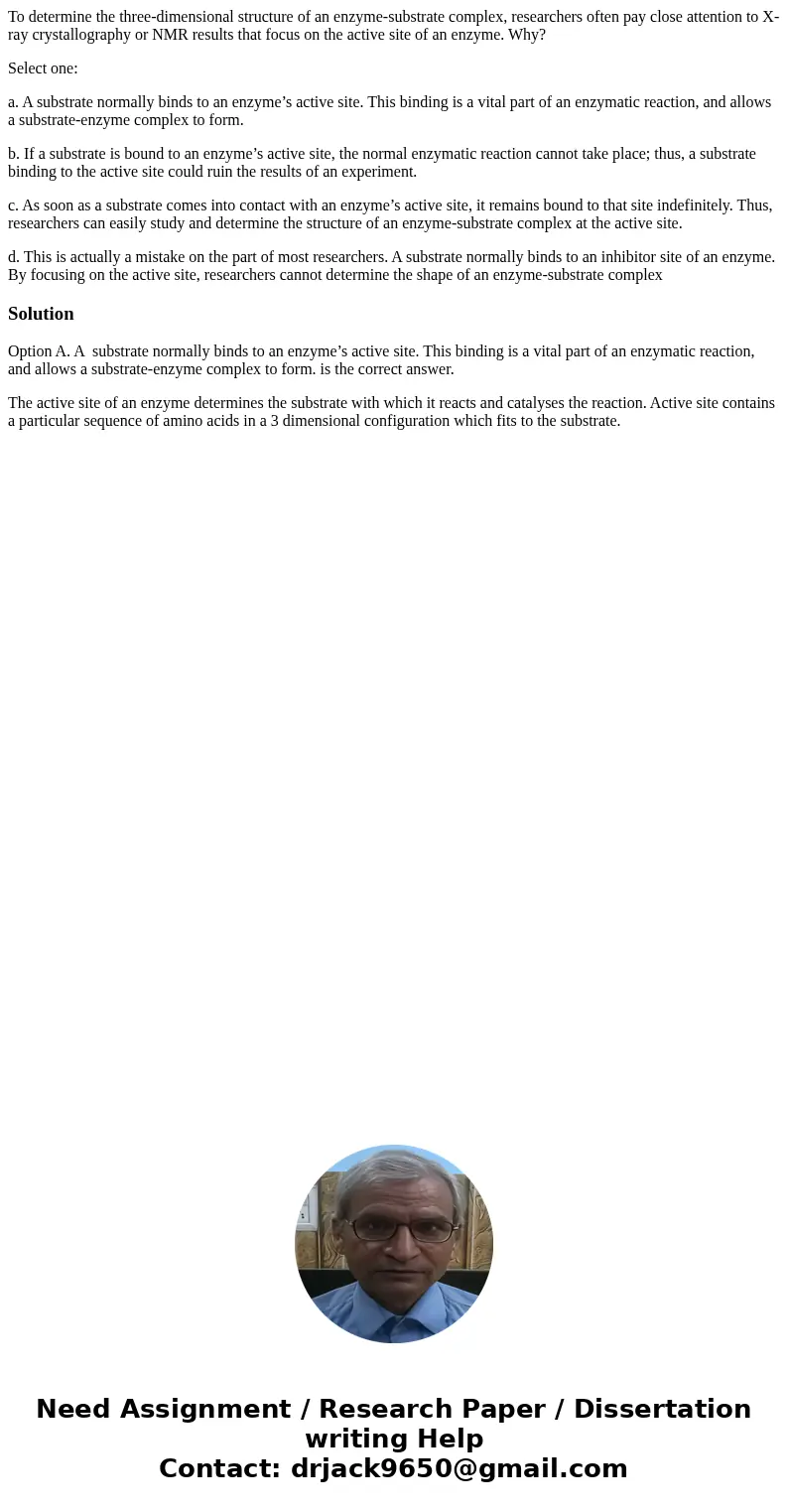To determine the threedimensional structure of an enzymesubs
To determine the three-dimensional structure of an enzyme-substrate complex, researchers often pay close attention to X-ray crystallography or NMR results that focus on the active site of an enzyme. Why?
Select one:
a. A substrate normally binds to an enzyme’s active site. This binding is a vital part of an enzymatic reaction, and allows a substrate-enzyme complex to form.
b. If a substrate is bound to an enzyme’s active site, the normal enzymatic reaction cannot take place; thus, a substrate binding to the active site could ruin the results of an experiment.
c. As soon as a substrate comes into contact with an enzyme’s active site, it remains bound to that site indefinitely. Thus, researchers can easily study and determine the structure of an enzyme-substrate complex at the active site.
d. This is actually a mistake on the part of most researchers. A substrate normally binds to an inhibitor site of an enzyme. By focusing on the active site, researchers cannot determine the shape of an enzyme-substrate complex
Solution
Option A. A substrate normally binds to an enzyme’s active site. This binding is a vital part of an enzymatic reaction, and allows a substrate-enzyme complex to form. is the correct answer.
The active site of an enzyme determines the substrate with which it reacts and catalyses the reaction. Active site contains a particular sequence of amino acids in a 3 dimensional configuration which fits to the substrate.

 Homework Sourse
Homework Sourse